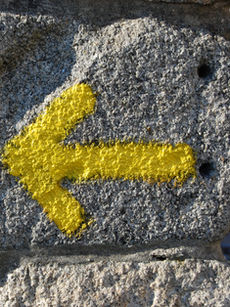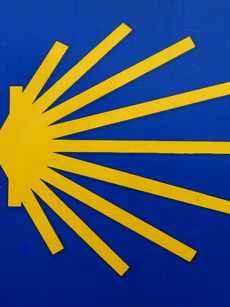
Camino de Santiago
A brief history

Saint James
Saint James is considered one of the twelve disciples of Jesus Christ.
Legend has it, that the remains of Saint James were found in North-western Spain, in the 9th century A.D.
This devotion to Saint James spurred the development of a renowned pilgrimage route known as the Camino de Santiago. "Camino" translates to "way" in Spanish, and Camino de Santiago translates to "The Way to Santiago de Compostela".
Signs and Symbols
You will see this signs and symbols on your Camino journey. Learning about these will help you on your journey. If you want to know more, you can go to our blog and read articles that will list out things in more detail



Fun facts about the Camino
The scallop shell
This isn't just a pretty souvenir - it's the symbol of the Camino. Legend says it guided pilgrims to St. James' tomb, and now bright yellow scallop shells mark the routes.
Free wine fountain
Yep, you read that right. On the Camino Frances route, the town of Ayegui offers weary pilgrims a refreshing (and free!) glass of vino from a public fountain.
Many caminos, one destination
The Camino de Santiago isn't just one path. There are over a dozen routes across Europe, all leading to Santiago de Compostela in Spain.
Holy year bonanza
Every year when St. James' Day (July 25th) falls on a Sunday, it's a special "Holy Year" in Santiago. Expect bigger celebrations and more pilgrims on the trail.
The Camino goes medieval
The Codex Calixtinus, a 12th-century guidebook, is the OG Camino resource. It has maps, itineraries, and even local legends to keep pilgrims informed and entertained.
More than walking
While walking is traditional, you can also cycle (bicigrinos!), horseback ride, or even hike the Camino. Choose your adventure!
Not just religious
The Camino is open to all. While many walk for religious reasons, it's a popular journey for self-discovery, cultural immersion, and enjoying the beautiful Spanish countryside.
Snack time on the Camino
Forget fancy restaurants, some of the best Camino treats are simple and delicious. Think fresh bread from local bakeries, sweet "tetilla" cheese, and energizing "pulpo a la feria" (octopus dish).













